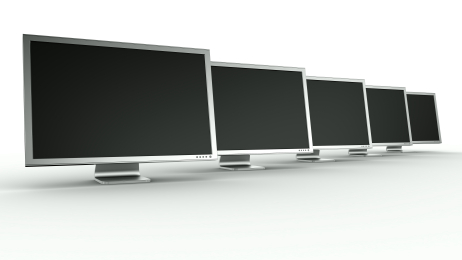

(法新社舊金山29日電) 網路龍頭Google今天發表研究顯示,美國人生活充斥多種螢幕,遊走於智慧型手機、平板電腦、一般電腦和電視之間。
根據Google報告「嶄新多螢幕世界:了解跨平台消費行為」(The New Multi-screen World:Understanding Cross-Platform Consumer Behavior),9/10美國人會一個接一個地使用多種螢幕產品。
Google表示,人們已經開始用手機讀取郵件,在電腦搜尋電視上所見的產品資訊等。
研究說,77%的人看電視時,手裡同時會使用另一種電子產品,通常是平板電腦或智慧型手機,上網搜尋在電視上看到的訊息。
Google引述這些發現是要證明,廣告商順應民眾穿梭各種螢幕間的潮流,開發新的廣告推銷方式才是聰明之舉。(譯者:中央社徐嘉偉)
Today 90% of our media consumption occurs in front of a screen. This cross-platform behavior is quickly becoming the norm, and understanding it has become an imperative for businesses. Here are some insights from our latest research:
- 90% of consumers begin a task on one device and then complete it on another device. Smartphones are by far the most common starting point for this sequential activity.
- TV no longer commands our full attention. In a typical day 77% of viewers use another device while they are watching TV. Because of this, a business's TV strategy should be closely aligned and integrated with the marketing strategies for digital devices.
- While consumers are using more than one device simultaneously, content viewed on one device can trigger specific behavior on the other. Businesses should therefore not limit their conversion goals and calls to action to only the device where they were initially displayed.
Discover many more valuable multi-screen insights.

Google recently released data about multiple screen use, under the title“The New Multi-screen World: Understanding Cross-Platform Consumer Behaviour.”Whilst it’s not the catchiest of titles, the document itself does provide an interesting insight into consumer use of certain devices, which could prove particularly useful to web designers and digital marketers alike.
The report separates multi-screen use into two primary categories – sequential screening, where the user moves from one device to another to achieve a single goal, and simultaneous screening, where they use multiple devices at the same time. 90% of people use their devices sequentially, with 98% moving between devices on the same day.
Online shopping in particular is a multi-screen activity – 67% of people have used multiple devices sequentially to shop online. Interestingly, tablets are most often the starting point for shopping and trip planning, and 81% of smartphone purchases are spontaneous, highlighting the opportunity to target certain types of ads more specifically towards these mobile devices.
With the average consumer using a combination of 3 different screens every single day, it seems that the multi-screen world is truly upon us, and this is having a knock-on effect in a number of industries. The web design industry, for instance, must recognise the necessity to optimise sites for a variety of platforms, whereasdigital marketing has needs to focus on directing appropriate ads to various types of devices.
Are your company’s strategies up to speed in the multi-screen world?
調查/67%消費行為跨越單螢幕 多螢幕時代已然到來
早在去年智慧型手機的出貨量就已超越PC,市場也預測在固網難以佈建的開發中國家,平價手機將比PC更受到歡迎。雖然手機通路的重要性是越來越高,不過只顧到手機可能也不夠了,根據調查數據顯示,消費者的行為已經跨越單一螢幕,在手機、平板、電腦、電視四種螢幕間轉換,多螢幕的世界已經悄然來臨。
出門旅遊時,先在家裡電腦上網查資料,出門後透過雲端,在交通工具上以平板電腦閱讀當地資訊,到達目的地後,再利用手機查詢地圖,最後到達目的地。以上就是一個跨螢幕的使用案例,相信不少人應該有過類似的經驗,不過這種跨螢幕間的使用情形,到底已經有多普及了呢?
根據Google去年第三季,針對全球智慧型手機上網用戶所做的調查顯示,用戶每天與媒體發生的互動中,平均有90%是透過手機、平板、電腦、電視四種螢幕來達成,只有10%是花在傳統媒體如收音機、報紙、雜誌上,平均每天花在螢幕前的時間是4.4個小時。
對於這四種螢幕,用戶每次使用的時間也有不同:智慧型手機平均每次使用17分鐘、平板電腦平均每次使用30分鐘、筆電/個人電腦平均每次使用39分鐘、電視平均每次使用43分鐘。

▲ 手機、平板、電腦、電視四種螢幕,用戶每次使用的時間不同(圖片取自/網路)
用戶大部分的時候只同時使用一種螢幕,會選擇何種螢幕取決於當時的需求;各種螢幕間,會出現「同時使用」及「交替使用」的情況,大部分的使用情境是以手機為起點,並利用搜尋作為所有螢幕間的橋樑。
基本上電腦螢幕適合維持生產力,主要用在耗費時間、需要高度專注力的工作上,有69%的人在家中使用電腦,31%的人在外使用。
手機讓人彼此聯繫,主要用在溝通及較為即時的需求,有60%的人即使在家中也會使用手機,有40%的人是在外使用。
平板電腦主要用作休閒娛樂,如:上網、影視、電玩,大部分的人都是在家中使用,有79%,有21%的人在外使用。
在上午9:00到下午6:00這段上班時間,以上三種螢幕的使用量為電腦大於手機大於平板;但是晚上下班之後的時間,則變為平板大於手機大於電腦
電視是家中的娛樂平台,但不再吸引消費者全部的注意力,有77%的人在看電視時,會同時使用另外一種螢幕;電視變成是手機搜尋的催化劑,有22%的手機搜尋是在看到電視內容之後所引發,而其中17%是由於看到電視廣告。
各螢幕間彼此交替使用的狀況,大部分在同一天之內會完成,比如從手機上看到某些有興趣的內容之後,會在當天就從電腦上去繼續閱讀。
手機是大部分跨螢幕使用情形的起點,視需求轉換到其他的螢幕後繼續完成;各種螢幕間通常是透過搜尋來串連,比如先在手機上搜尋,然後再到另外的螢幕上做第二次搜尋。
而用戶有購物需求時,在不同的螢幕間切換使用的機會大為提昇,有67%的用戶表示會在購物時,在不同的螢幕間交替使用。
手機看起來仍然是最重要的一個戰場,不過若想把握住每個珍貴的顧客,那麼在各種螢幕上應該都要可以被消費者找到;針對不同的螢幕,也應設計不同的行銷策略、目標,並鼓勵消費者做進一步交替式的使用。
Reference: 網路


 留言列表
留言列表